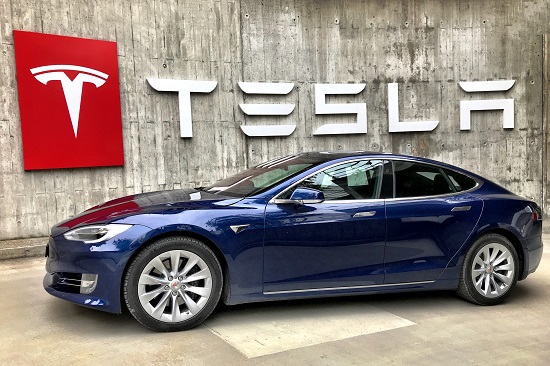Use Case Libraries Aim to Help Provide a Head Start With Applied AI
By AI Trends Staff To accelerate the adoption of applied AI, more organizations are putting forward libraries of use cases, offering details of projects to help others get a head start. For example Nokia recently announced the initial deployment of multiple AI use cases delivered over the public cloud through a collaboration with Microsoft, according […]


By AI Trends Staff
To accelerate the adoption of applied AI, more organizations are putting forward libraries of use cases, offering details of projects to help others get a head start.
For example Nokia recently announced the initial deployment of multiple AI use cases delivered over the public cloud through a collaboration with Microsoft, according to a recent account in ComputerWeekly.
Nokia, the multinational telecom company based in Finland, is suggesting that for its communication service provider (CSP) customers, AI use cases are helpful for managing the business complexity that 5G and cloud networks bring about. Nokia has integrated its AVA framework into Microsoft’s Azure public cloud digital architecture, to provide an AI-as-a-service model.
This allows CSPs advantages in implementing AI into their networks, including faster deployment across the network and multiple clusters, with services from the Nokia security architecture available as well. Nokia suggests that AI data setup can be completed in four weeks. After that initial data setup, Nokia suggests that CSPs can deploy additional AI use cases within a week, and ramp resources up or back them off as needed across network clusters after that. The Nokia security framework on Azure is said to segregate and isolate data, to provide security equivalent to that of a private cloud.

“CSPs are under constant pressure to reduce costs by automating business processes through AI and machine learning,” stated Friedrich Trawoeger, vice-president, cloud and cognitive services at Nokia. “To meet market demands, telcos are turning to us for telco AI-as-a-service. This launch represents an important milestone in our multicloud strategy.” Accessing the library of use cases remotely lowers costs and reduces environmental impacts, he suggested.
Rick Lievano, CTO, worldwide telecom industry at Microsoft, stated, “Nokia AVA on Microsoft Azure infuses AI deep into the network, bringing a large library of use cases to securely streamline and optimize network operations managed by Microsoft Azure.” The offering makes the case that public clouds are able to help service providers implement AI, he suggested.
The Australian mobile operator TPG Telecom implemented Nokia’s AVA AI on a local instance of Microsoft Azure, to help optimize network coverage, capacity, and performance. The project is said to help TPG detect network anomalies with greater accuracy and reduce radio frequency optimization cycle times by 50%.
Declan O’Rourke, head of radio and device engineering at TPG, stated: “Nokia’s AVA AI-as-a-service utilizes artificial intelligence and analytics to help us maintain a first-class, optimized service for our subscribers, helping us to predict and deal with issues before they occur.”
AI Sweden, the Swedish National Center for Applied AI, has implemented an AI use case library to help speed adoption. “We want to accelerate the adoption of applied AI and to do so we know we need to guide businesses and organizations by showing them what is possible,” it states on the AI Sweden website. “Building an AI use case library is our way of showcasing our partners and [their] work to the rest of the world,” it says. The center offers a link to a form where anyone interested is able to add their project to the library. It asks for contact information, whether the use case is for a customer or a partner, the industry, the business function area (sales or finance), the purpose or goal, the techniques used, the sources of data and the effect of the case.
US GSA Unit Last Year Developed a Use Case Library
The US General Services Administration last year began developing a library of AI use cases that agencies can refer to when they start investigating the new technology. The GSA’s Technology Transformation Services (TTS) launched a community of practice to define areas where they see challenges in adopting AI, according to an account in FedScoop.
Steve Babitch, head of AI at the GSA’s TTS, commented that the ability to search the use case library would have many advantages for project teams and could have unexpected benefits. “Maybe there’s a component around culture and mindset change or people development,” he stated. (See Executive Interview with Steven Babitch in AI Trends, July 1, 2020.)
Early practice areas TTS identified are acquisition, ethics, governance, tools and techniques, and possibly workforce readiness. Common early use cases across agencies include customer experience, human resources, advanced cybersecurity, and business processes.
One example came from the Census Bureau’s Economic Indications Division (EID), where analysts developed a machine learning model to automate data coding. The division releases economic indicators for monthly retail construction data, based on a data set of all the projects in the country. They had been assigning a code to identify the type of construction taking place using a manual process.
“It’s the perfect machine learning project. If you can automate that coding, you can speed up, and you can code more of the data,” stated Rebecca Hutchinson, big data leader at EID. “And if you can code more of the data, we can improve our data quality and increase the number of data products we’re putting out for our data users.”
The model the EID analysts created works with about 80% accuracy, leaving 20% to be manually coded.
Some of the analysts who helped to develop the EID ML model came out of the bureau’s data science training program, offered about two years ago to the existing workforce of statisticians and survey analysts. The program is an alternative to hiring data scientists, which is “hard,” Hutchinson stated. The training covered Python in ArcGIS and Tableau through a Coursera course. One-third of the bureau’s staff had completed training or were currently enrolled, giving them ML and web scraping skills.
“Once you start training your staff with the skills, they are coming up with solutions,” Hutchinson stated. “It was our staff that came up with the idea to do machine learning of construction data, and we’re just seeing that more and more.”
DataRobot Offering Use Case Library Based on its Experiences with Clients
Another AI use case library resource is being offered by DataRobot of Boston, supplier of an enterprise AI development platform. The company built a library of about 100 use cases based on their experiences with clients in 14 industries.

“We are hyper-focused on enabling massively successful and impactful applications of AI,” stated Michael Schmidt, Chief Scientist, DataRobot, in a press release. “DataRobot Pathfinder is meant to help organizations—whether they’re customers or not—deeply understand specific applications of AI for use cases in their industry, and the right steps to create incredible value and efficiency.
One example is an application to predict customer complaints in the airline industry. Complaints typically include flight delays, overbooking, mishandling of baggage and poor customer service. Regulations In certain geographies can result in penalties for service failures, which can be costly. Proactive responses such as emailing customers about the status of lost luggage, or a phone call to apologize for a flight delay, or financial compensation for a cancellation, can help keep customers happy.
An AI program can provide the ability to predict when a complaint is likely, by using past complaint data. Forecasting volumes of complaints can inform call center strategy and help recommend the best service recovery solution, switching to a proactive instead of a reactive response.
Read the source articles and information in ComputerWeekly, in FedScoop and in a press release from DataRobot.




































